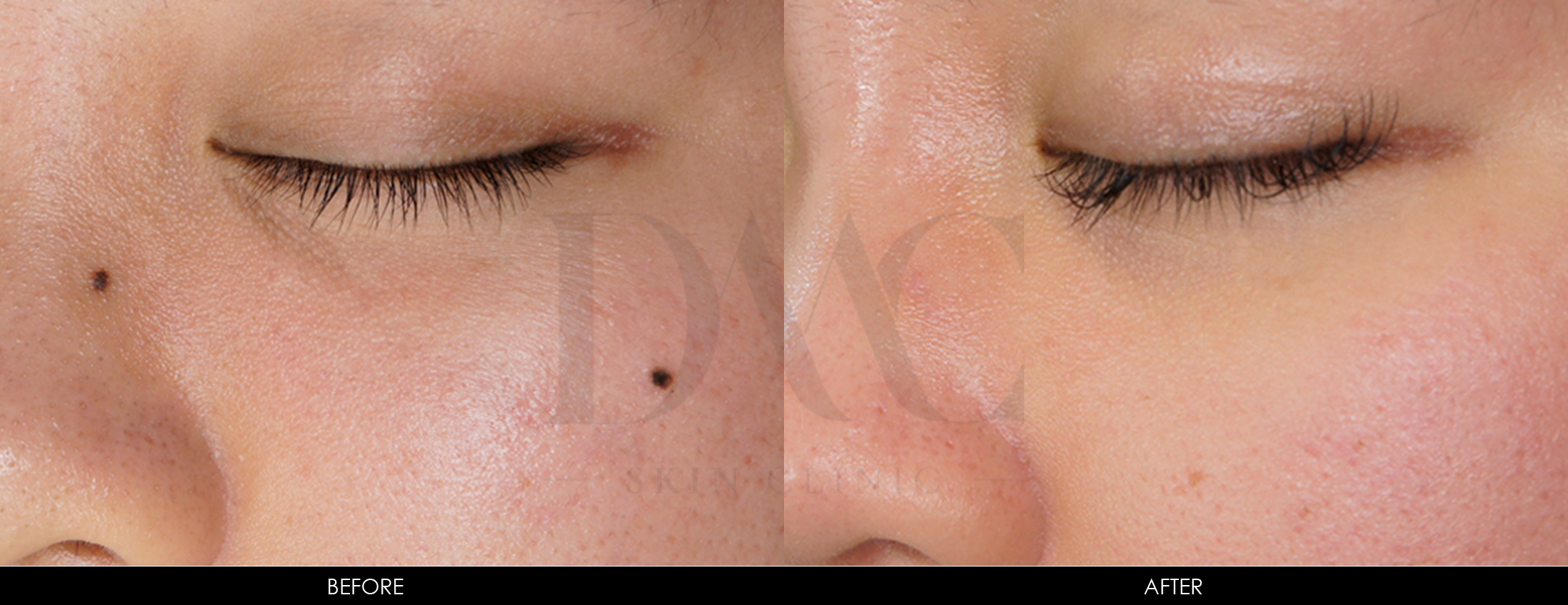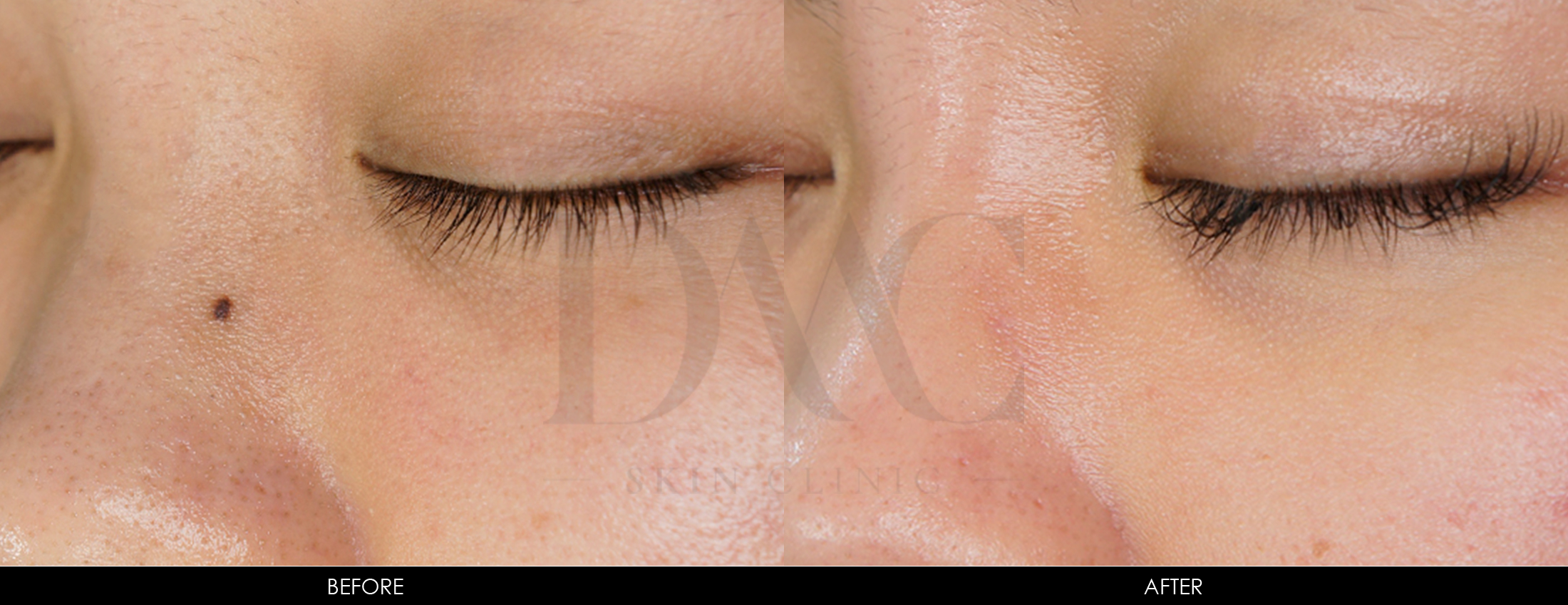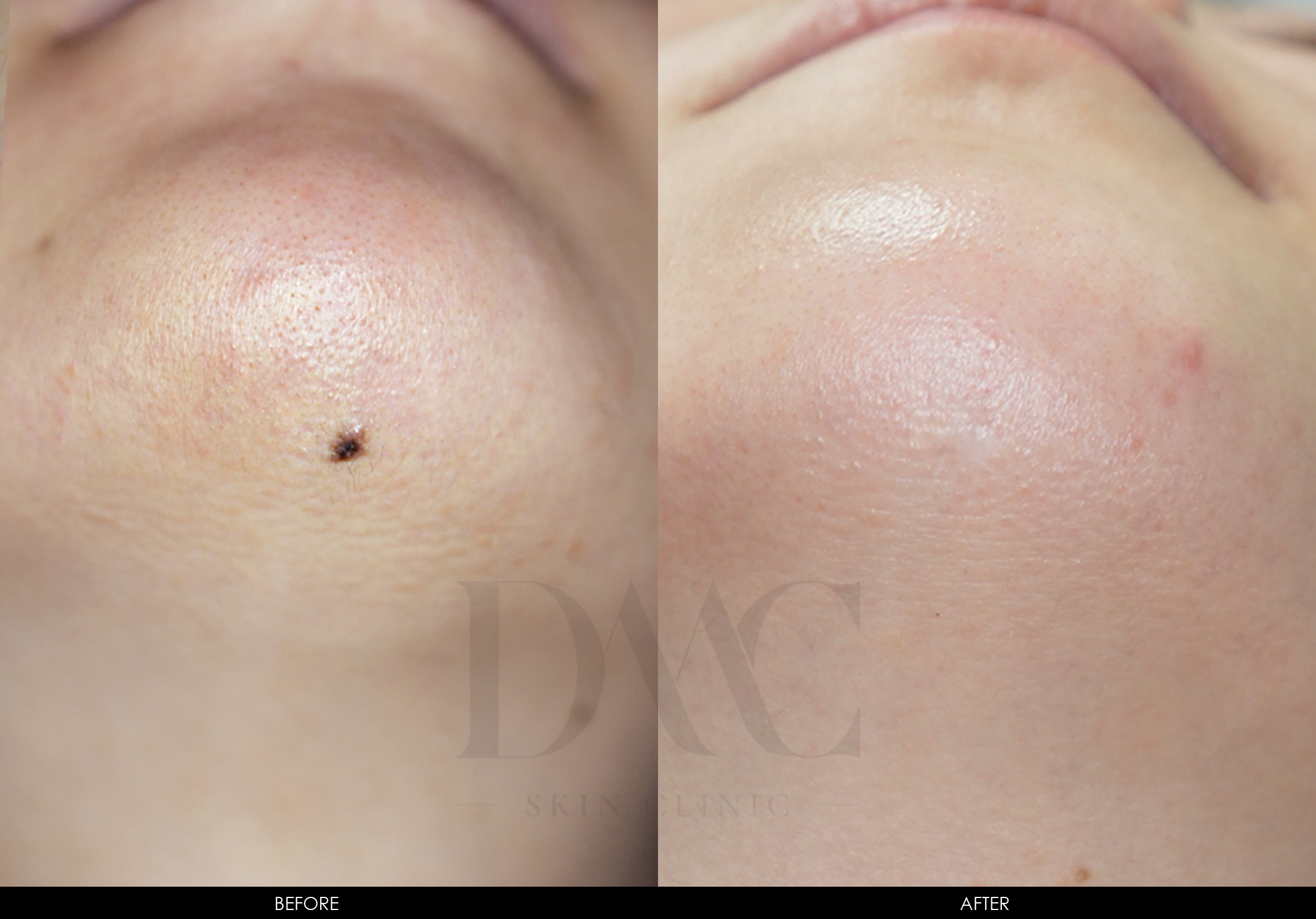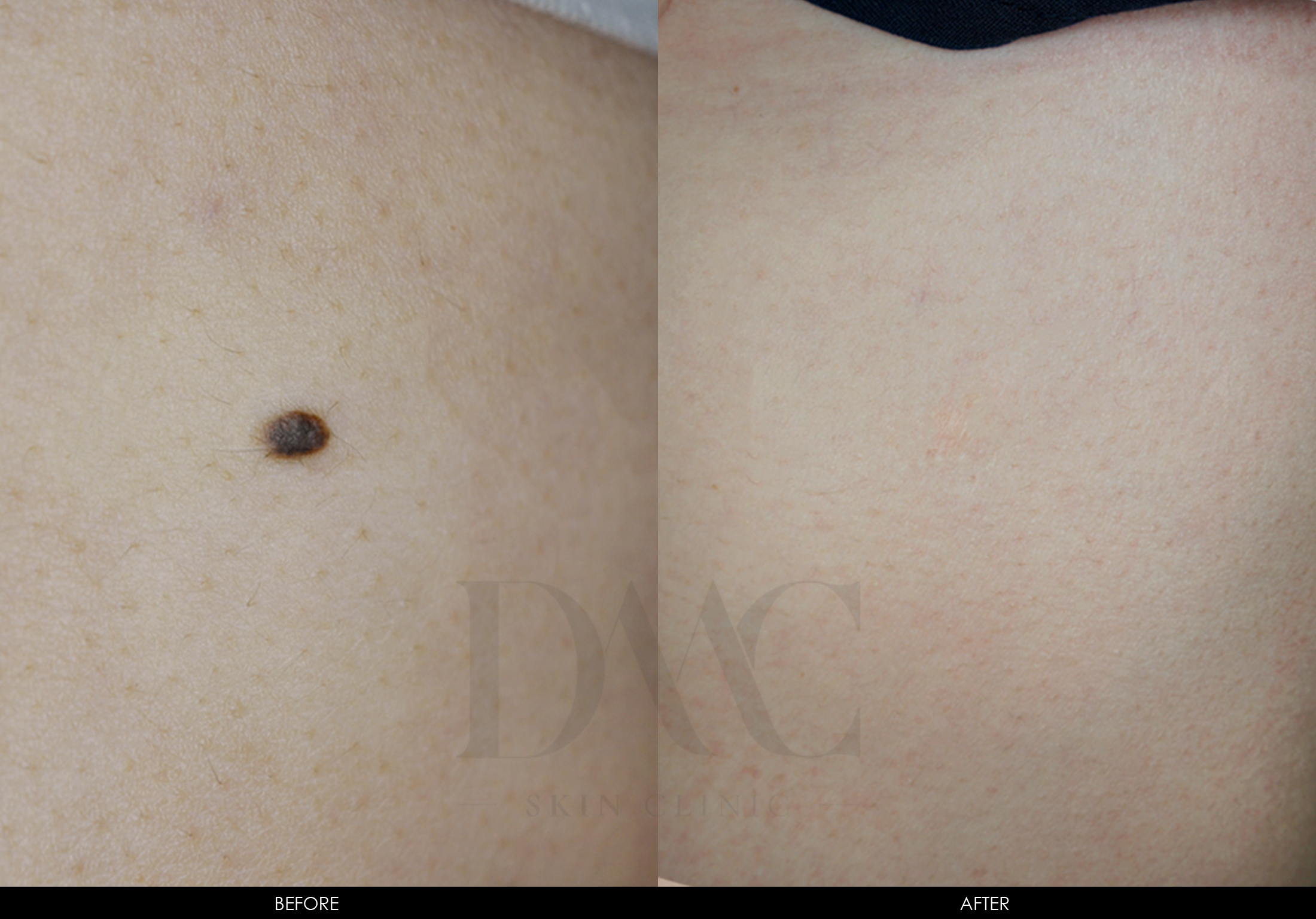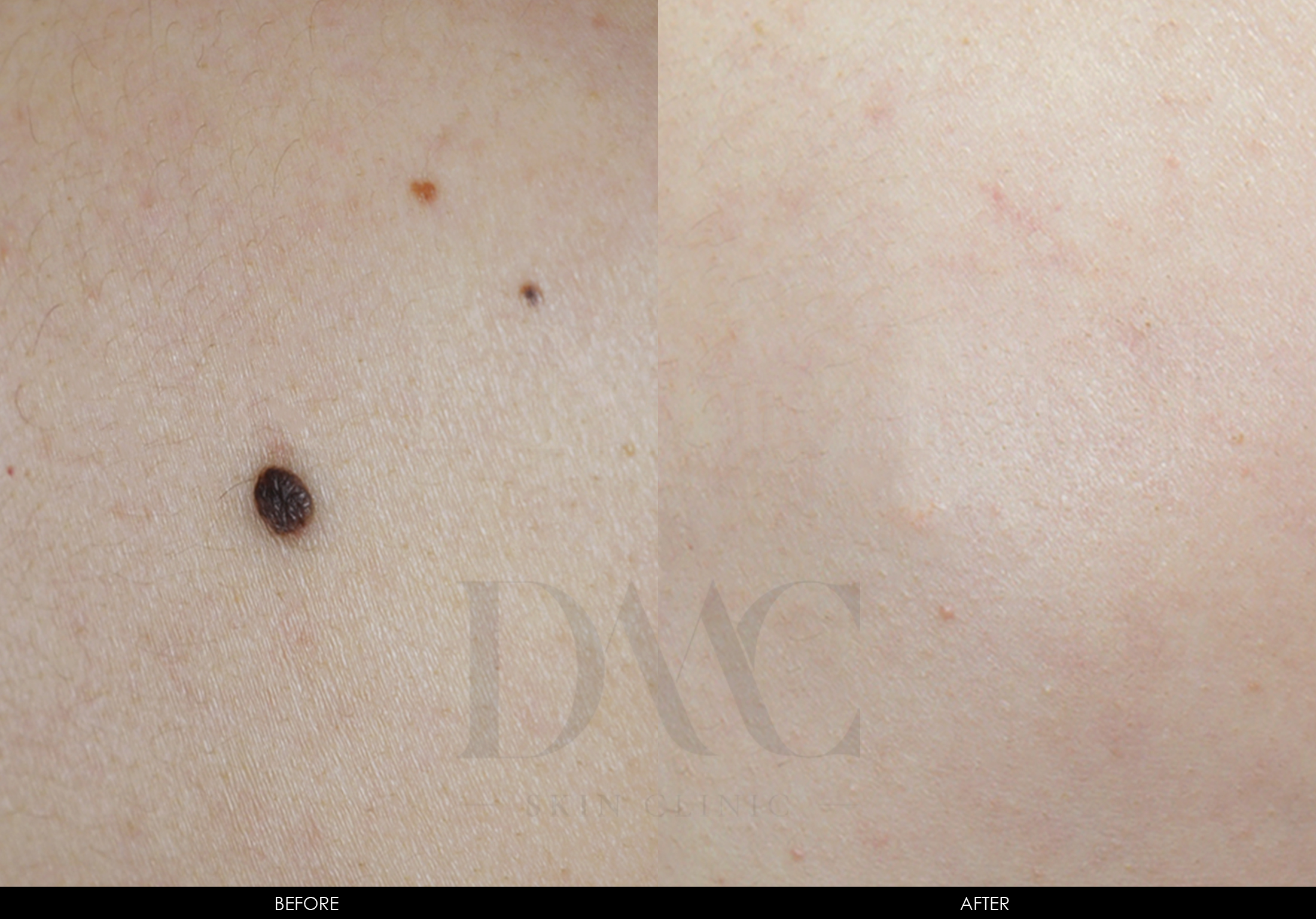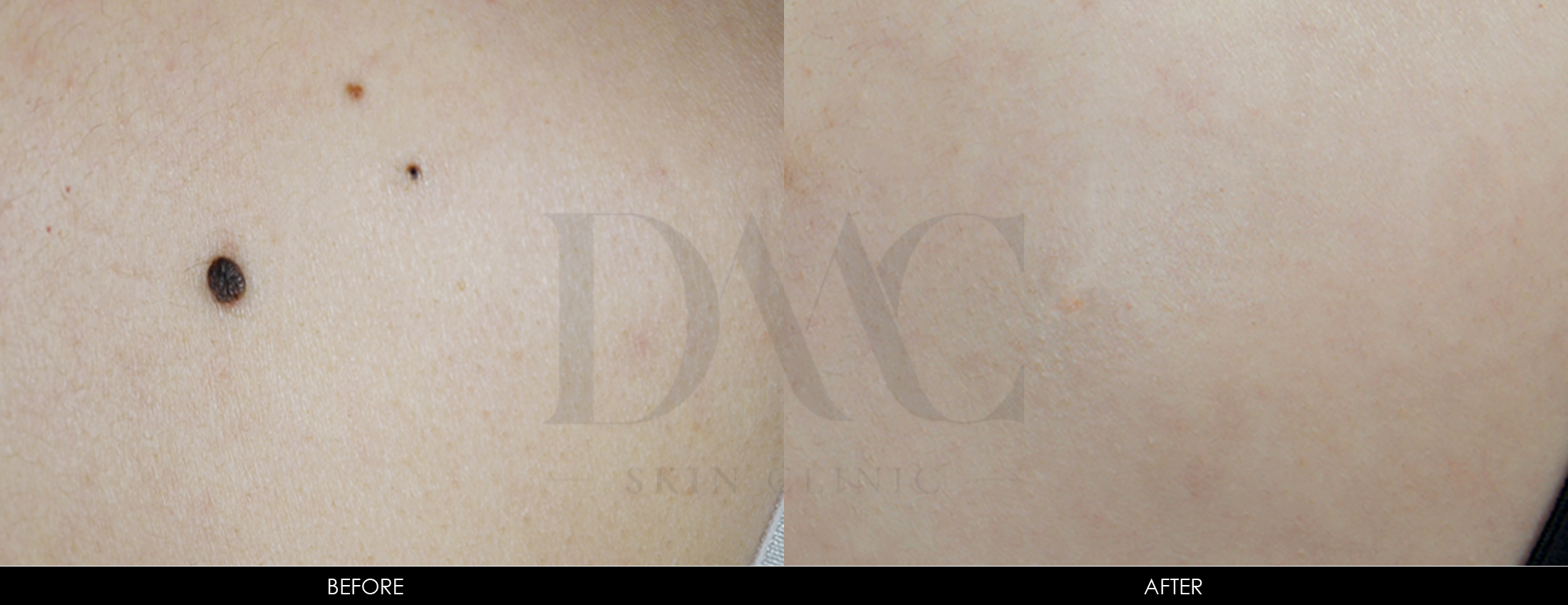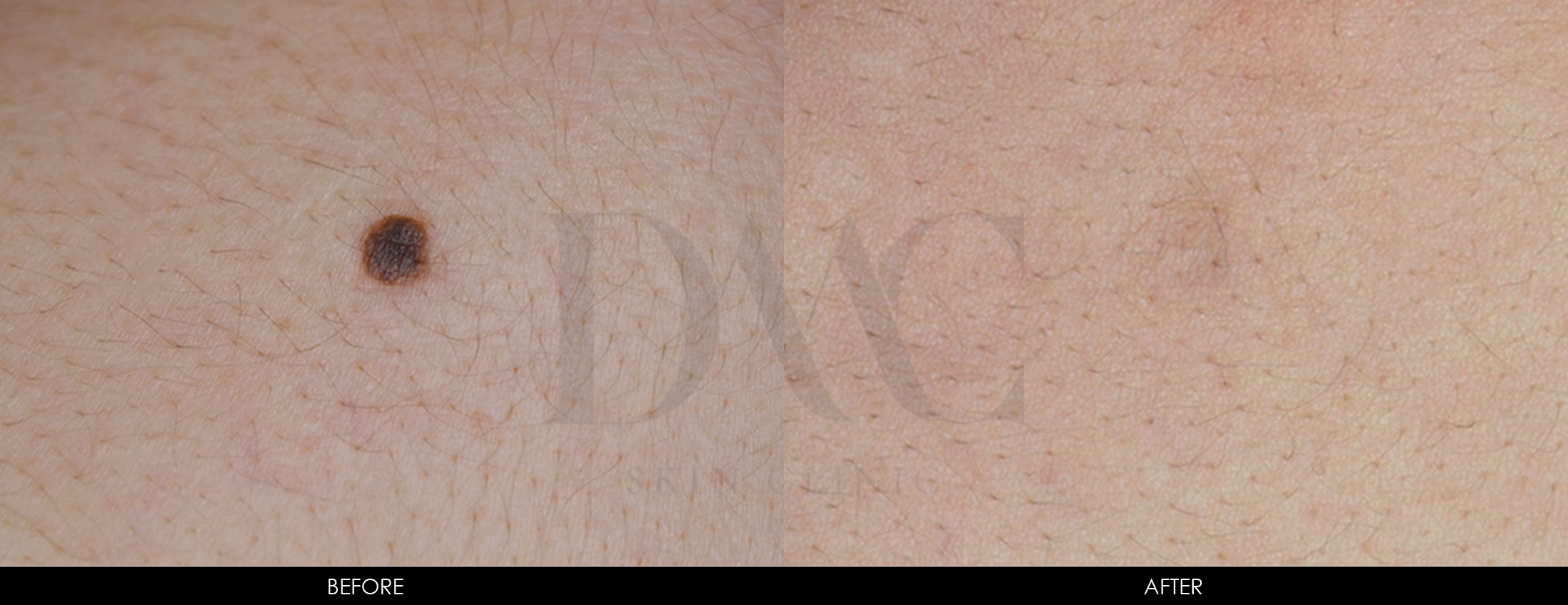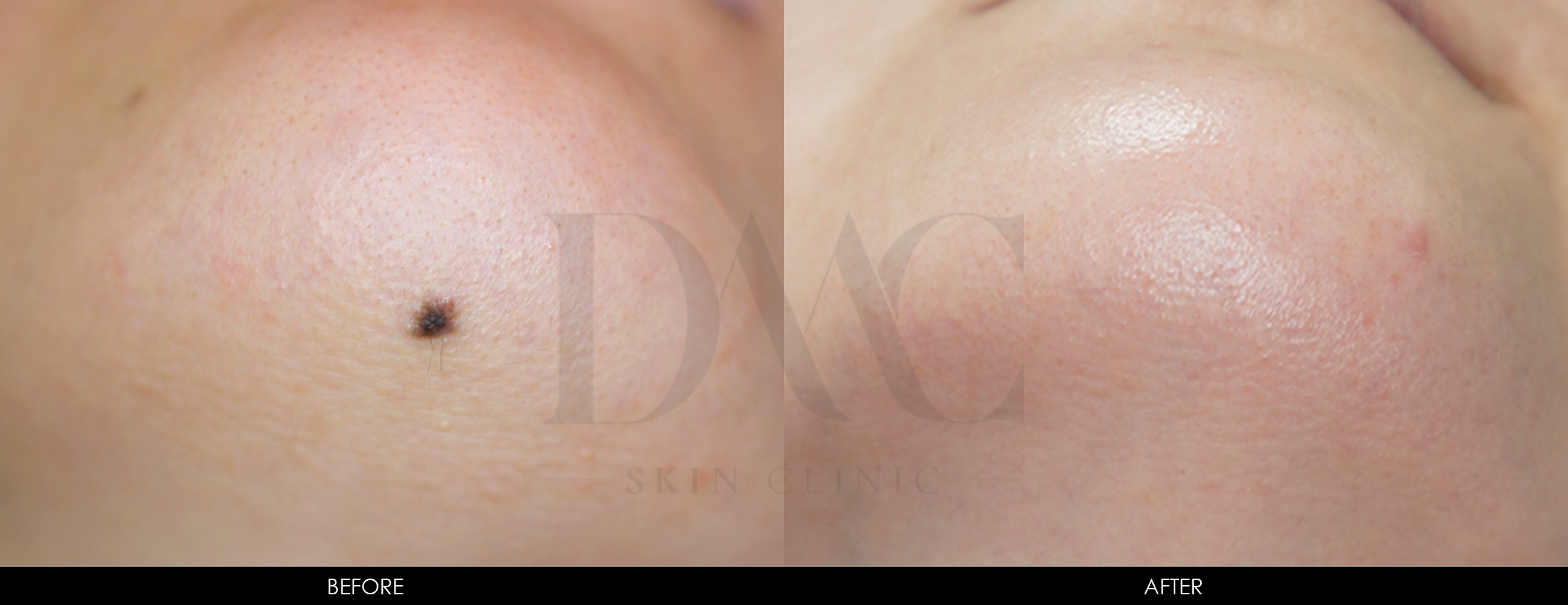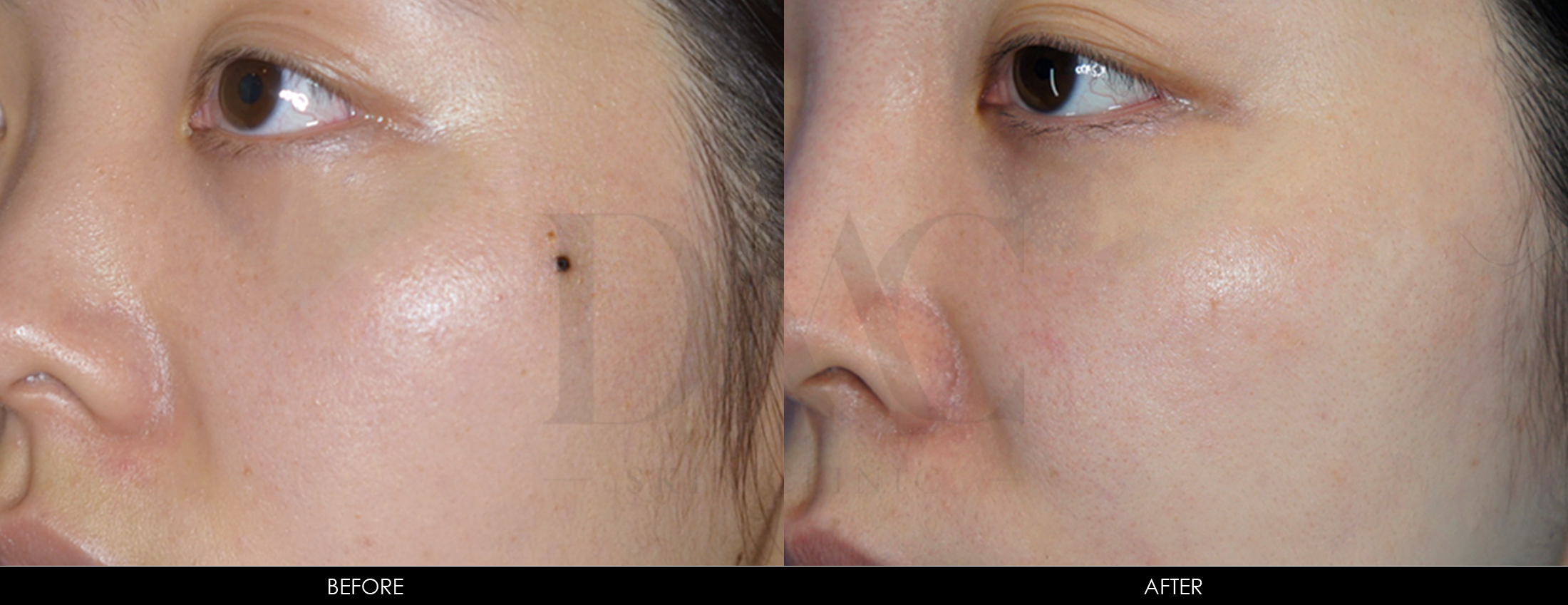ADVANCED MICROSURGICAL PRECISION MOLE REMOVAL
Since 2008, DMC Skin Clinic has provided in-clinic surgical mole removal. Using specialized tools and operated under high power magnification for advanced removal, the mole removal procedure has offered much relief and satisfaction to patients with unwanted lesions. DMC Skin Clinic always tries to put forth aesthetic result (aka less scarring as possible) as one of our main priorities alongside safety and high quality care.
WHAT IS MOLE REMOVAL?
Moles refer to certain types of non-cancerous tumours composed of pigment-producing cells that colonize the upper layer, and sometimes the lower layer, of the skin. Moles can be safely removed through minor surgical procedures during which the mole is cut away from normal skin and the resulting wound closed with fine sutures. The fine sutures or tissue adhesives are done for the best cosmetic results and better recovery process. Some of the commonly observed types include the following three:
- Junctional Nevus: light to dark brown coloured, oval-shaped flat mole, and shallowest of the three types
- Intradermal Nevus (or, Dermal Nevus): light brown or skin coloured, oval-shaped raised mole, and sits deep inside the skin; best treated using surgical methods, as laser removal typically results in a higher chance of recurrence and scarring.
- Compound Nevus: brown coloured, oval-shaped raised center sitting on a flat oval-shaped brown spot.
In some cases, certain skin cancers may appear to have characteristics that closely resemble those of a mole. During the examination, a dermatoscope is used for a more precise evaluation of the lesions in question. As well, if required, the removed lesion may be subject to an in-house microscopic exam or sent out for a biopsy.
FREQUENTLY ASKED QUESTIONS
- How many treatment sessions do I need?
Surgical mole removal has the highest success rate and nearly always results in a complete and permanent removal of the mole. Generally 1 session is enough. - Is the filler removal painful?
Topical anesthetic cream application and local anesthetic injections are offered to minimize discomfort during treatment. DMC Skin Clinic also offers the use of analgesic laughing gas for patients who desire additional relief. - Are laser and other methods that burn off the lesions better?
Destructive methods such as laser and electrosurgical devices that burn the mole essentially destroys the mole tissue during the removal process. This makes it difficult to examine the removed mole after the procedure. As well, the destructive methods may pose further issues such as:- Collateral damage in the surrounding skin, which slows down healing and precipitates an unnecessary inflammatory process, ultimately increasing the chance of potential problems of scarring, hyperpigmentation and prolonged redness;.
- Charring or bleeding, which restricts the performing physician from accurately assessing the treatment area. As a result, the chance of recurrence is high, especially for deeper moles and/or those located in areas of the skin with deep pores (e.g. nose).
Although laser/electrosurgical mole removal methods seem economical as the treatment duration required per mole is significantly shorter, a repeat procedure that may become necessary due to an incomplete removal.
- Is there any downtime following the mole removal?
Bleeding generally resolve in a few hours to a few days. After care may be required by the patient for several weeks after the surgical procedure and patients may have to return to remove outer stitches. Patients are also required to keep the area protected from UV exposure for several weeks.


